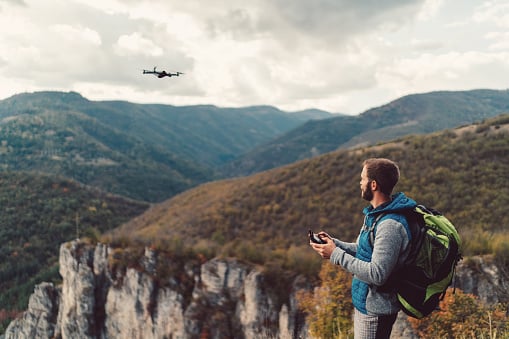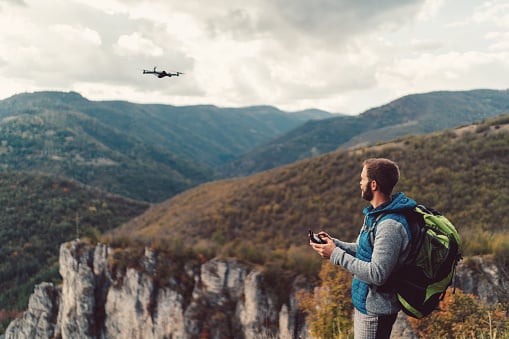Drone Photography: The Do's & Don'ts

Take surreal, aerial photos with drones— the right way.

Drone photography is a thrilling hobby that can be turned into an exciting career path for those who want to step away from the 9-5 grind. They grant you the freedom to capture lively, surreal images from impossible angles.
Whether you just want to take aerial shots of your weekend hikes with friends, or if you work as a construction surveyor— knowing the do’s and don’ts of drone photography will improve your flight experience overall.
Understand Legal Requirements for Drone Photography
The most important factor to consider before participating in any drone-related activity is to understand the legal requirements (and limitations) of your state or municipality.
Drones are considered UAVs (unmanned aerial vehicles) and governments worldwide have enacted privacy protection laws that limit the use of drones in certain areas. Because most drones are equipped with high-quality, advanced camera technology, flying over residential neighborhoods, government areas and other public spaces is highly restricted.
These laws protect citizens’ privacy, national security, and individuals’ safety.
As a hobbyist, these are the general rules you must follow:
- Pass the FAA TRUST (The Recreational UAS Safety Test)
- Register your drone through the FAA's DroneZone if it weighs over 55 lbs.
- Fly only during the day and keep the aircraft in sight and under 400 ft.
- Keep your drone speed at or below 100 mph
- Yield to manned aircraft and do not fly over people
- Do not operate a drone from a moving vehicle.
While these regulations are easy enough to understand, commercial drone pilots have a different set of requirements they adhere to.
If you plan to use your drone for professional photography, confirm whether or not you need a Part 107 license for the type of footage you will be filming; this permit grants access to areas that are restricted to recreational flyers.
These are the professions that may be required to have Part 107 licenses:
- Real estate videographers/photographers
- Construction site surveyor
- Crime/forensic cartographers
- Disaster response drone officer
- Infrastructure inspector
Keep It Safe—Stay Aware of Your Surroundings!
Like with any aircraft, the weather and surrounding area affect flight success. It’s important to have a solid understanding of the place and time you will be flying in to avoid crashes or unnecessary incidents.
Drones are expensive equipment—don’t fly them in the rain or near bodies of water unless they are waterproof or watertight; be sure to check the wind before you take off! Windy conditions affect your drone’s stability in the air and your safety.
Be aware of your surroundings and familiarize yourself with what’s around you. Make sure you know where you are in case of an emergency or drone malfunction.
Most importantly, keep in mind the buildings, electric wires, and height of the treelines that you will be flying around as these factors influence the maneuverability (or lack thereof) you will have in the air.
Use Drones Equipped with Safety & Protection Features
Not all drones are built the same— if you’re using your drone for photography, you likely have a model with a high-end camera. You will want features that will minimize the risk of losing or crashing your equipment.
Here are some popular features that will make your flight experience even better:
- GPS & Satellite Location - This establishes your location via satellite and helps the drone navigate through its surroundings.
- Autonomous Return Home - Some drones will automatically return home if the battery is low. It’s a great feature that prevents your drone from dropping mid-flight.
- Drone Stability - This feature uses barometric sensors to adapt to changes in atmospheric pressure mid-flight, helping the drone stay at its current altitude.
- Find My Drone (Waypoint dropping) - This feature will help you locate your drone based on the last location it was in as it “drops a point” on the flight map.
- Finally, don't forget to hit "record"! Just because you see beautiful videos on your controller, doesn’t mean that you’re actually capturing those images.
Drone photography is becoming increasingly popular; it’s one of the many fields drones have modernized. By following these tips, you will capture incredible images and have a worry-free flight experience.
Looking for a drone? Check out our wide selection of consumer drones here.
